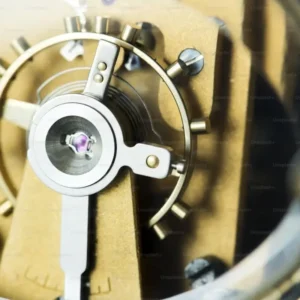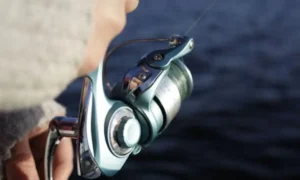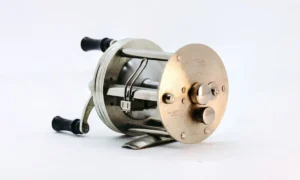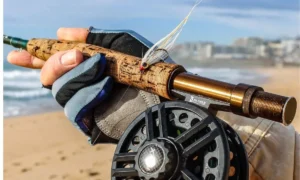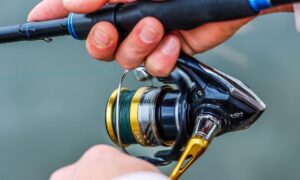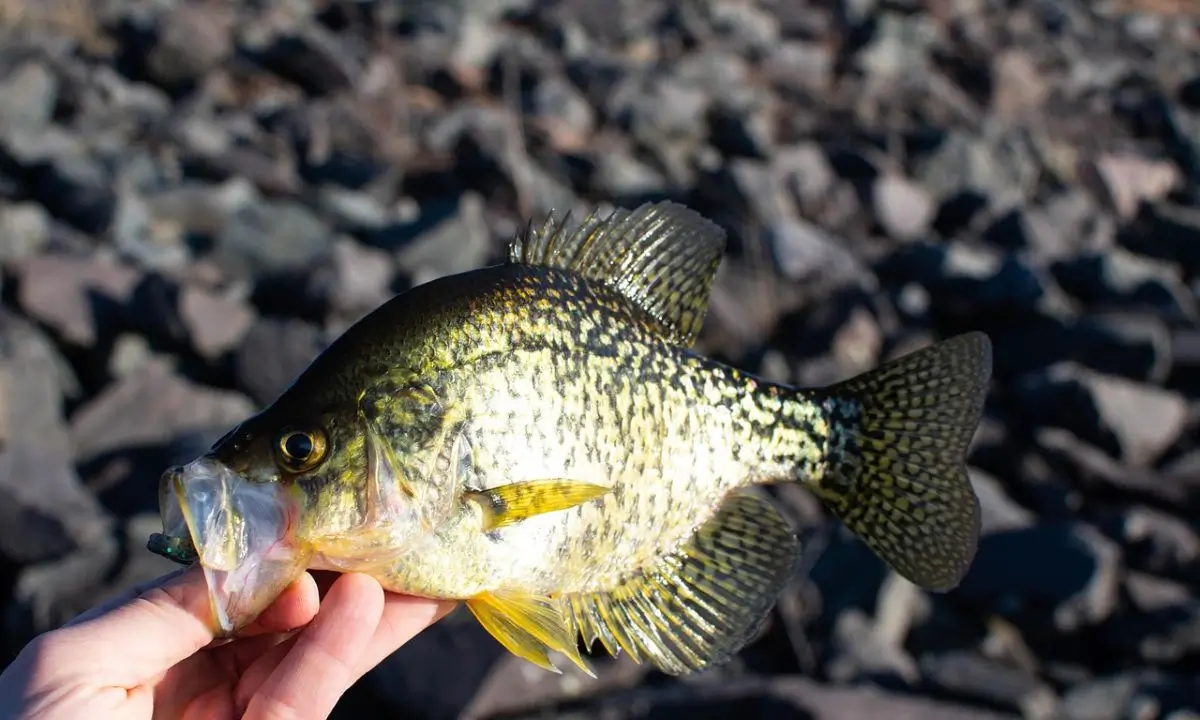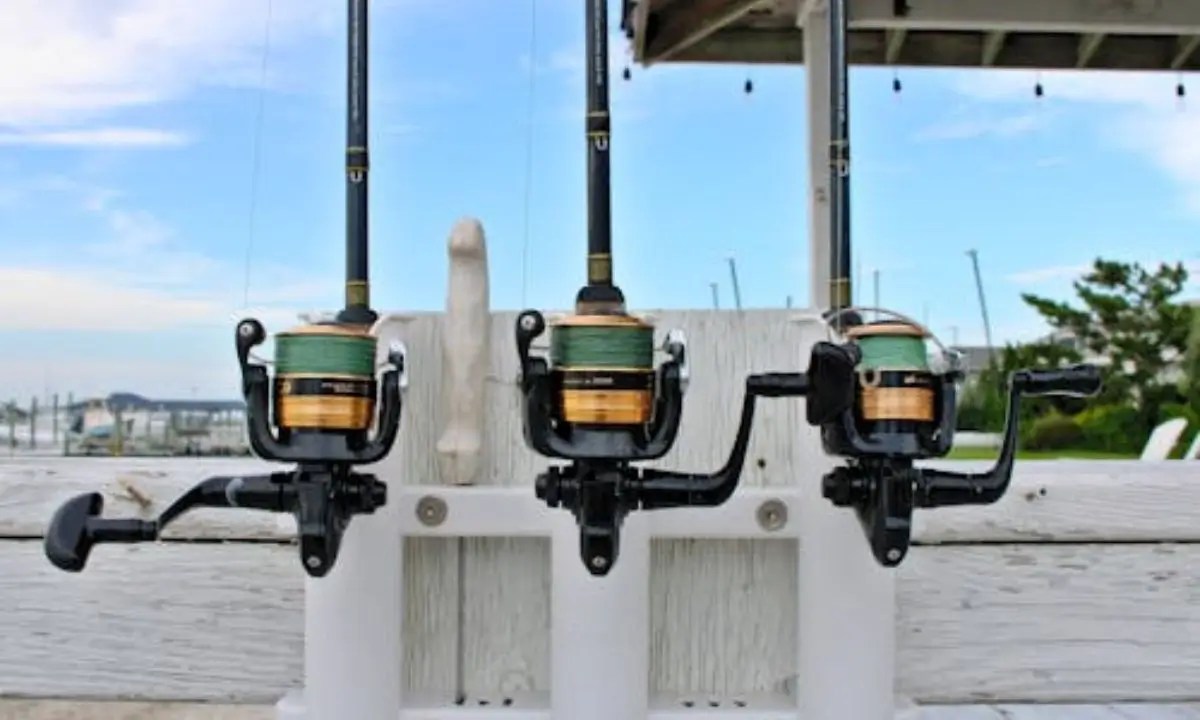To clean a spinning reel, carefully disassemble it, wipe away dirt with a soft brush, rinse gently with warm water, dry completely, and apply reel oil or grease to moving parts before reassembling.
Introduction
A spinning reel works hard every time you fish, collecting dust, sand, and salt that can slowly damage its internal parts. Knowing how to clean a spinning reel is one of the most important maintenance steps for any angler. A clean reel spins smoothly, casts farther, and lasts much longer.
Over the years, I’ve cleaned hundreds of reels — from freshwater models to saltwater beasts — and learned that regular cleaning not only improves performance but also saves money by preventing corrosion. In this step-by-step guide, you’ll discover the exact process I use to clean, dry, and lubricate a spinning reel safely. Whether you’re a weekend hobbyist or a seasoned fisherman, these simple steps will keep your reel performing like new every season. more info Reel Grease Tips & Tricks
Why You Should Never Skip Cleaning Your Spinning Reel
If you’ve been fishing for a while, you already know that your spinning reel is your best friend on the water. Whether you’re casting for bass in freshwater or targeting snappers in saltwater, a clean reel can make all the difference. But here’s the thing—most anglers ignore reel maintenance until it’s too late.
Over time, salt, sand, and debris can corrode internal parts and destroy your reel’s performance. I’ve personally had reels lock up during a fight with a 15lb mahi-mahi—simply because I didn’t clean it after a salty day. So let’s not make that mistake again!
🧰 Tools and Materials Needed
Before you start learning how to clean a spinning reel, gather all
the right tools to make the process quick and safe. Using the correct materials ensures you don’t scratch or damage the reel’s parts while cleaning. Here’s what you’ll need:
- Soft brush or old toothbrush: Perfect for removing sand, dirt, and salt from tight spaces.
- Mild detergent or reel cleaner: Helps dissolve grease and grime without harming metal parts.
- Microfiber cloths: For wiping and drying components gently.
- Cotton swabs: Useful for cleaning small corners and bearing areas.
- Reel oil and grease: Keeps the internal gears and bearings running smoothly.
- Small screwdriver set: For carefully disassembling and reassembling your reel.
💡 Pro Tip: Avoid harsh chemicals or WD-40 — they can strip away protective grease and shorten your reel’s lifespan.
🔧 Why Cleaning Your Spinning Reel Matters (Even If You Don’t Fish Daily)
Many beginner anglers assume reel maintenance is only for tournament pros or heavy users. That’s far from true. Here’s why regular cleaning matters:
- Saltwater = Silent Killer: Salt can corrode inner bearings faster than you think.
- Sand = Grinding Gears: Just a few grains inside your reel can ruin smooth performance.
- Dirt Buildup = Line Trouble: Dirt affects line lay, drag performance, and retrieve speed.
- Long-Term Savings: A $150 reel can last 10+ years with simple cleaning.
🎯 Real Example:
I once used a Shimano Sedona in the Florida Keys for 4 straight days. Didn’t clean it. After a week, the anti-reverse started skipping. Opened it up? Full of white corrosion. That reel could’ve lasted years if I had just rinsed and greased it after use. more info Top Grease for Fishing Reels
⚙️ Step-by-Step Cleaning Process
Cleaning your spinning reel may look complicated, but with patience and the right technique, it’s simple. Follow these easy steps to keep your reel performing like new every season.
Step 1: Prepare Your Workspace
Before starting, set up a clean, well-lit area with a towel or soft mat on the table. This helps prevent losing tiny screws or parts. Keep all your cleaning tools close. Having everything organized will make the process smoother and faster.
💡 Pro Tip: Use a white towel or tray — it makes spotting small screws easier if they fall.
Step 2: Disassemble the Reel
Gently remove the handle, spool, and drag knob. Use a small screwdriver to take off the side plate. Keep each part in order, so reassembly becomes easier later. Take pictures as you go if you’re new to this — it helps you remember where each part belongs.
⚠️ Warning: Don’t force any part that feels stuck. Apply gentle pressure and patience.
Step 3: Clean the Components
Dip your soft brush into mild detergent or reel cleaner, then carefully scrub away dirt, grease, and salt buildup. Use cotton swabs for tight corners and bearings. Avoid soaking the reel in water; it can harm internal parts. After brushing, wipe everything with a dry microfiber cloth.
💡 Pro Tip: For saltwater reels, rinse lightly with freshwater before wiping to remove salt residue.
Step 4: Dry and Inspect
Make sure every component is completely dry. Check for rust, cracks, or worn-out bearings. Early detection prevents major damage later. If you find corrosion, gently polish the area with a soft cloth and apply a small amount of reel oil.
Step 5: Lubricate and Reassemble
Apply a few drops of reel oil to the bearings and gears. Don’t over-lubricate — a small amount goes a long way. After that, reassemble the reel following your disassembly order. Spin the handle gently to check smoothness and proper function.
✅ You’re Done!
Now your spinning reel should feel light, smooth, and ready for your next fishing trip. details What to Grease Fishing Reel With
🧰 What You’ll Need (Basic Reel Cleaning Kit)
Here’s a reliable checklist you can follow. Most of these items are available online or at local tackle stores.
| Item | Purpose |
| Soft toothbrush or small paintbrush | For removing debris and sand |
| Microfiber cloths | For wiping and drying parts |
| Warm water + mild soap | Basic cleaning solution |
| Cotton swabs/Q-tips | For tight spots |
| Small screwdriver | To open reel components |
| Toothpicks | For applying grease in hard-to-reach areas |
| Reel oil (like Shimano, Penn) | For bearings and moving parts |
| Reel grease (Shimano, Cal’s, Penn) | For gears and drag systems |
| Isopropyl alcohol (optional) | For deep cleaning stubborn grime |
👉 Pro Tip: Avoid WD-40. It can damage seals and wash out factory grease.
🛠️ Reel Maintenance Tips for Longevity
Knowing how to clean a spinning reel is only part of keeping it in top condition. Regular maintenance ensures smooth performance, longer life, and fewer costly repairs. Here are essential tips to extend your reel’s lifespan:
- Rinse after every trip: Especially in saltwater, lightly rinse with fresh water to remove salt and sand. Avoid submerging the reel fully.
- Dry thoroughly: Use microfiber cloths to wipe each part and prevent moisture buildup, which causes corrosion.
- Lubricate regularly: Apply reel oil to bearings and light grease to gears after cleaning. A thin, even layer is enough; over-oiling can attract dirt.
- Check screws and parts: Ensure handles, drag knobs, and screws are tight but not over-torqued. Loose components can damage internal parts.
- Store properly: Keep reels in a cool, dry place, preferably in a protective reel bag or case. Avoid exposure to direct sunlight for long periods.
- Schedule seasonal deep cleaning: Even if used lightly, a full disassembly and cleaning once a year prevents hidden buildup and keeps your reel spinning smoothly.
💡 Pro Tip: Treat your reel like a precision instrument — a few minutes of care after each trip saves hours of repair work and keeps it performing like new.
⚙️ A Quick Look at How a Spinning Reel Works
Before we open it up, let’s understand what’s inside your spinning reel. Knowing the spinning reel’s basic components will help you clean without damaging anything.
Major Parts to Know:
- Spool: Hold your fishing line.
- Bail Arm: Guides the line back to the spool.
- The drag system helps manage how much pressure is applied when a fish pulls on the line.
- Handle & Rotor: Cranks and rotates the spool.
- Main Gear & Pinion Gear: Located inside the reel body; they turn your effort into line retrieval.
- Ball Bearings: Enable smooth operation.
- The anti-reverse system prevents the handle from turning backward when reeling in a fish.
➡️ When we clean, we’ll focus on keeping these parts free of salt, sand, and old grease, and re-lubricate them for smooth operation. details Fishing Reel Gear Ratio Explained
🚨 Pre-Cleaning Precautions (Read Before You Start)
Cleaning your reel isn’t complicated—but one wrong move can cause permanent damage. Follow these safety and preparation tips before you begin:
🔸 1. Read the Manufacturer’s Manual
always follow your reel brand’s guidelines, as brands like Shimano, Penn, Daiwa, and Abu Garcia may have slight variations.
🔸 2. Work in a Clean, Flat Space
Avoid working near sand or carpet. Lay out a towel and a small tray to hold screws.
🔸 3. Take Pictures as You Go
Take pictures of each step using your phone to keep a clear record. Trust me, this will save you during reassembly!
🔸 4. Use Light Force
Never force a part open. If it’s stuck, it needs soaking—not muscle.
🔸 5. Do Not Over-Grease or Over-Oil
More isn’t better. Using too much lubricant can collect dust and cause the gears to stick.
🧽 Step-by-Step: How to Clean a Spinning Reel (Properly & Safely)
Now that you’ve prepared your tools and work area, let’s start the actual cleaning process.
🔧 1. Disassemble the Reel (But Don’t Overdo It)
You don’t have to completely break your reel down into 50 parts. Most cleanings require removing the spool, handle, drag knob, and side plate. Here’s the breakdown:
✅ How to Disassemble Safely:
- To remove the spool, turn the drag knob counterclockwise until it comes off.
- Take off the handle – usually unscrews in reverse.
- Use a small screwdriver to take off the side plate, and make sure to keep the screws in order.
- Carefully remove the rotor and gear covers, which may vary depending on your reel model.
📸 Pro Tip: Take pictures at every step. It’ll make reassembly way easier.
🧼 2. Clean Each Component (Outside & Inside)
For basic cleaning, use gentle soap and warm water. A soft toothbrush will help scrub off dirt and debris without scratching.
🪣 Clean These Parts:
| Part | Cleaning Tool | Notes |
| Spool | Toothbrush + soapy water | Clean line area, drag washers (if accessible) |
| Handle | Cloth + Q-tips | Get into the knobs and shaft |
| Rotor | Brush | Remove sand and grit |
| Internal Gears | Q-tips + isopropyl alcohol | Be gentle, don’t over-saturate |
| Side Plate | Cloth + dry brush | Avoid water near bearing seals |
🚫 Avoid soaking the reel. It might push water into sealed components.
🔩 3. Dry Thoroughly
Let each part air dry on a clean towel or gently pat dry with microfiber cloths. Make sure there’s no water left in crevices—moisture is your reel’s worst enemy.
🛢️ 4. Apply Reel Grease & Oil (The Right Way)
Now, let’s talk about lubrication. This step is important to make your reel last longer and give you smooth, effortless casts.
🟡 Where to Use Oil:
Use a high-quality reel oil and learn what to grease a fishing reel with for moving parts:
- Ball bearings
- Handle knobs
- Bail arm pivot points
- Anti-reverse bearing
👉Use a tiny amount of oil—too much can make dust and dirt build up.
🔵 Where to Use Grease:
Apply a small amount of reel grease—such as Cal’s, Shimano, or Penn blue—to the necessary parts.
- Main gear teeth
- Pinion gear
- Drag washers (if manufacturer recommends)
- Gear shafts
🧠 Real Experience Tip:
I once over-greased my Shimano reel with cheap auto grease. It clogged the main gear and slowed down retrieval speed. Since then, I only use Cal’s for gears and Shimano oil for bearings.
⚠️ Common Greasing Mistakes to Avoid
| Mistake | Why It’s Bad |
| Over-greasing gears | Attracts dirt, slows down reel |
| Using car or lithium grease | Not water-resistant, can damage seals |
| Oiling drag washers | Some washers should stay dry — check your manual |
| Mixing different greases | Chemical reactions may degrade the lube |
| Skipping bearings | Leads to noisy, jerky reel behavior |
🛠️ 5. Reassemble Your Reel (Step-by-Step)
Once you’re done cleaning and greasing the parts, carefully put the reel back together.
Follow these steps in reverse:
- Reinsert gears and gently align them
- Screw side plate back on securely
- Attach rotor and bail arm
- Insert spool and tighten drag knob
- Attach handle and spin to test movement
👉 Test everything: Does the reel spin smoothly? Is the bail clicking? No grinding sound? Then you’ve done it right.
💧 Freshwater vs. Saltwater Reel Cleaning
| Type | Frequency | Special Consideration |
| Freshwater | Clean every 5–10 trips | Rinse with water + mild soap |
| Saltwater | Rinse after every trip + deep clean monthly | Use corrosion-resistant oil/grease |
💡 Pro Tip: After every saltwater trip, rinse the reel with freshwater (light mist only) and wipe it dry to avoid buildup between cleanings. details Fishing Reel Gear Ratios Guide
🧪 Best Grease & Oil for Spinning Reels (Quick Review)
Here’s a short comparison of the best reel lubricants I’ve personally used:
| Product | Best For | Notes |
| Cal’s Universal Reel Grease | Gears, drag | Smooth, heat-resistant |
| Penn Precision Grease | Saltwater reels | Blue color, water repellent |
| Shimano Grease & Oil Kit | Shimano reels | Perfect match for their design |
| Yamalube Marine Grease | Heavy-duty reels | Great for offshore gear |
| Ardent Reel Butter | All-purpose | Budget-friendly option |
⚠️ Common Mistakes to Avoid (Approx. 180 words)
Even if you know how to clean a spinning reel, a few small mistakes can easily damage it. Many anglers unknowingly shorten their reel’s lifespan just by missing tiny details during cleaning. Here are the most common mistakes to watch out for:
- Using too much water: Soaking your reel in water can allow moisture to enter the bearings and gears, causing rust and corrosion.
- Over-oiling or over-greasing: A thick layer of grease attracts dirt and sand, which can make your reel feel stiff and heavy.
- Using strong chemicals or WD-40: These products remove factory grease and protective coatings. Always use a reel-safe cleaner instead.
- Losing small parts during disassembly: Work on a flat, organized surface so you don’t misplace tiny screws or washers.
- Skipping regular maintenance: Cleaning once a year isn’t enough, especially if you fish in saltwater. Light maintenance after every trip helps prevent buildup.
💡 Pro Tip: Gentle, frequent care is better than one deep clean after months of neglect.
🔧 Common Reel Problems & How to Fix Them After Cleaning
Even after cleaning and greasing your spinning reel, you may run into a few hiccups. Here’s the smart way to handle them like an expert.
⚠️ Reel Feels “Sticky” or Stiff?
Probable Cause: Too much grease or dirt in bearings.
Fix:
- Reopen the side plate
- Clean excess grease
- Re-lube sparingly
- Check bearings—if damaged, replace
⚠️ Bail Arm Doesn’t Snap Back Smoothly?
Probable Cause: Lack of lubrication or spring wear.
Fix:
- Put a single drop of reel oil on the bail arm joint for smooth movement.
- If still stiff, inspect spring mechanism (you might need a replacement)
⚠️ Clicking or Grinding Sound?
Probable Cause: Sand/dirt in gears, misaligned parts
Fix:
- Open reel and clean thoroughly
- Align gears carefully during reassembly
- Apply proper grease
🎣 Real-life Tip:
I once ignored a light clicking sound in my Penn Battle reel—turns out a tiny sand particle was grinding the pinion gear. Fixed it just in time before major damage!
🎣 Bonus Section – Brand-Specific Tips
While the general steps for cleaning a spinning reel work for most models, some popular brands have unique features that need special attention. Here’s how to clean reels from major brands effectively:
Shimano Reels
Shimano reels often have drag washers that are sensitive to over-greasing. Apply light grease only to gears, and use a few drops of oil on the bearings. Avoid excessive oil on the drag system to prevent slipping.
Penn Reels
Penn reels are built for heavy-duty saltwater use. Rinse with fresh water after every trip and dry thoroughly to prevent corrosion. Their sealed bearings need minimal oil; focus on cleaning gears and the spool for smooth operation.
Daiwa Reels
Daiwa reels are lightweight with precision components. Use a soft brush to clean tight spaces, especially around the handle and bail. Lubricate lightly to maintain smooth rotation without adding extra resistance. clean a spinning reel
Abu Garcia Reels
Abu Garcia reels require careful handling of the spool tension system. Remove debris carefully, and lubricate the main gear lightly. Avoid using harsh chemicals that can damage internal coatings.
💡 Pro Tip: Always refer to the manufacturer’s manual for model-specific instructions. These small adjustments make a big difference in performance and longevity.
Following these brand-specific tips ensures your reel spins smoothly, lasts longer, and reduces the risk of corrosion or wear, whether you fish in freshwater or saltwater.
🏁 Final Summary & Call to Action
Learning how to clean a spinning reel properly ensures smooth performance, longer lifespan, and fewer fishing mishaps. By following step-by-step cleaning, regular maintenance, and brand-specific tips, your reel will remain reliable whether you fish in freshwater lakes or saltwater seas.
Remember to rinse your reel after every trip, lubricate moving parts carefully, and inspect bearings for wear. Avoid harsh chemicals like WD‑40, and perform full disassembly at least once a year for a deep clean. These simple habits save time, money, and prevent damage, keeping your reel performing like new for years.
💡 Pro Tip: If you found this guide helpful, check out our related posts on reel lubrication and gear maintenance. Share your experiences in the comments or on social media to help other anglers keep their reels in top condition! more Fishing Rod and Reel Combos
How often should I clean my spinning reel?
After every saltwater trip and at least twice per season for freshwater use, to prevent salt, sand, or grime from damaging internal parts.
Can I clean a spinning reel without disassembling it?
Yes, for light maintenance: gently mist with fresh water, wipe the exterior, and apply light oil to external parts—but full disassembly is best yearly.
What type of oil or grease should I use on a spinning reel?
Use lightweight reel oil for bearings and light gear grease for gears. Avoid heavy engine oils or generic lubricants—they may harm seals.
What should I do if my reel was fully submerged in saltwater?
Rinse with fresh water immediately (light mist), disassemble quickly, clean and dry all parts, lubricate, and inspect for corrosion or damage.
Is it okay to use WD-40 or strong chemical sprays on my reel?
No — WD-40 or harsh chemicals can strip factory grease and damage seals. Use reel-safe cleaner or mild detergent instead.
How do I know if my reel bearings are bad?
Signs include grinding noise, stiffness, or rough spinning. If bearings don’t spin smoothly when isolated, they likely need replacement.
Should I send my reel to a service center or clean it myself?
You can clean basic parts yourself, but for full internal overhaul or after immersion, a professional service is safer to avoid damage.



